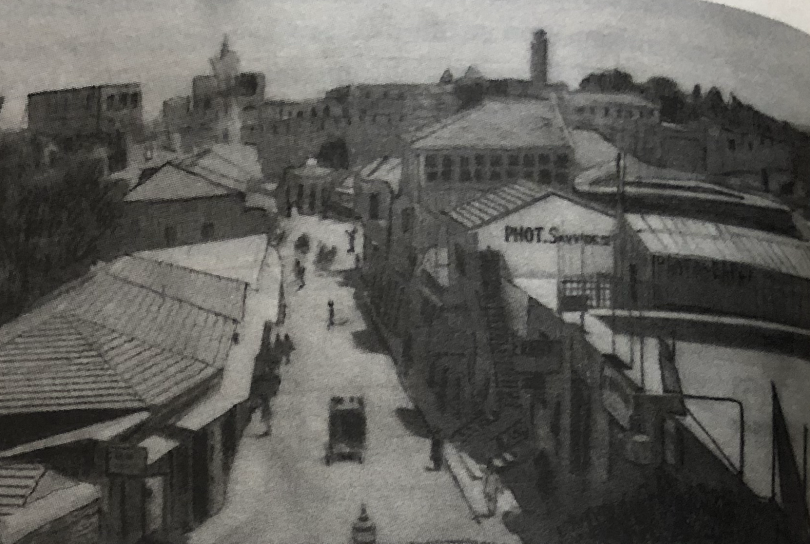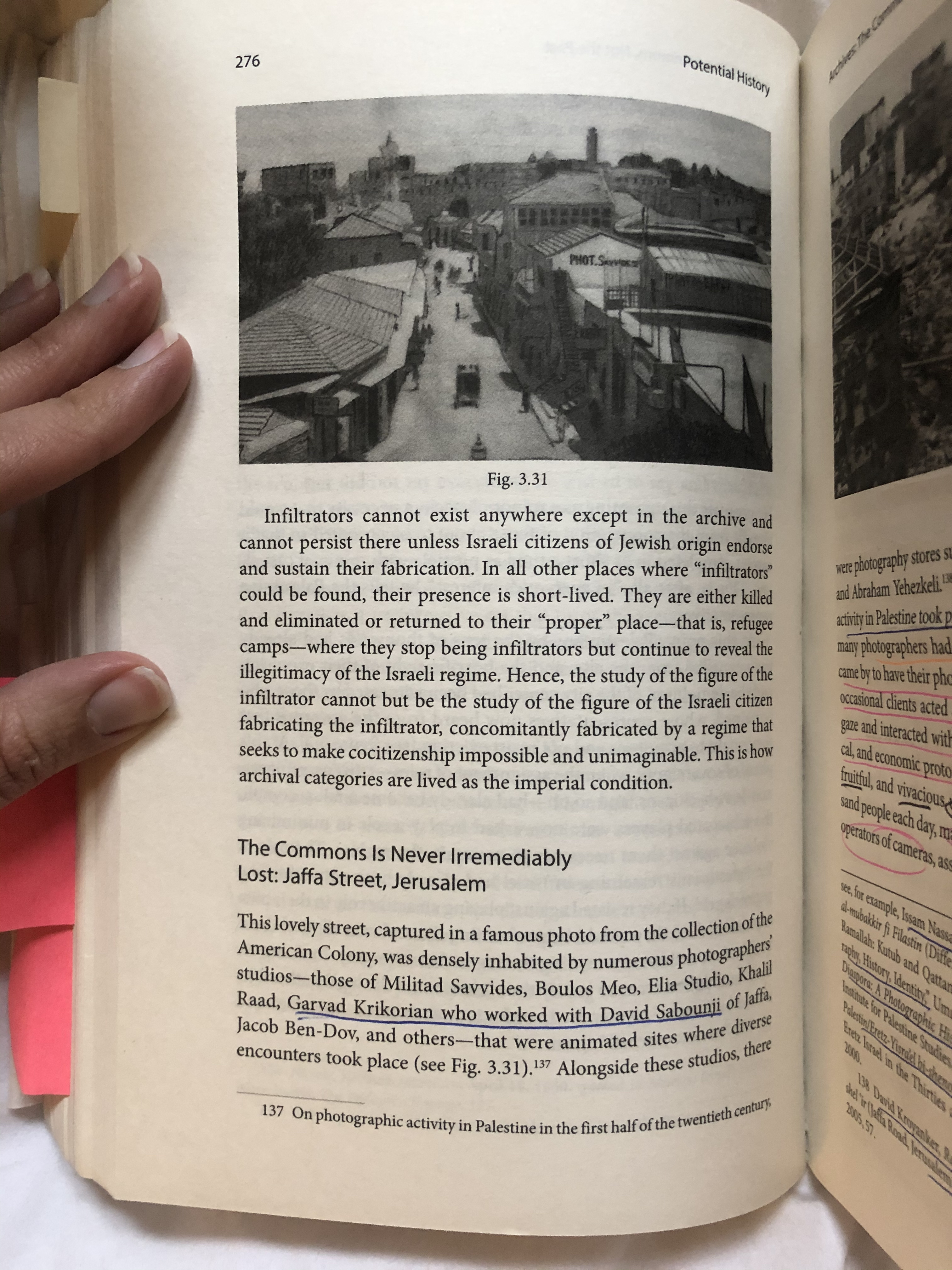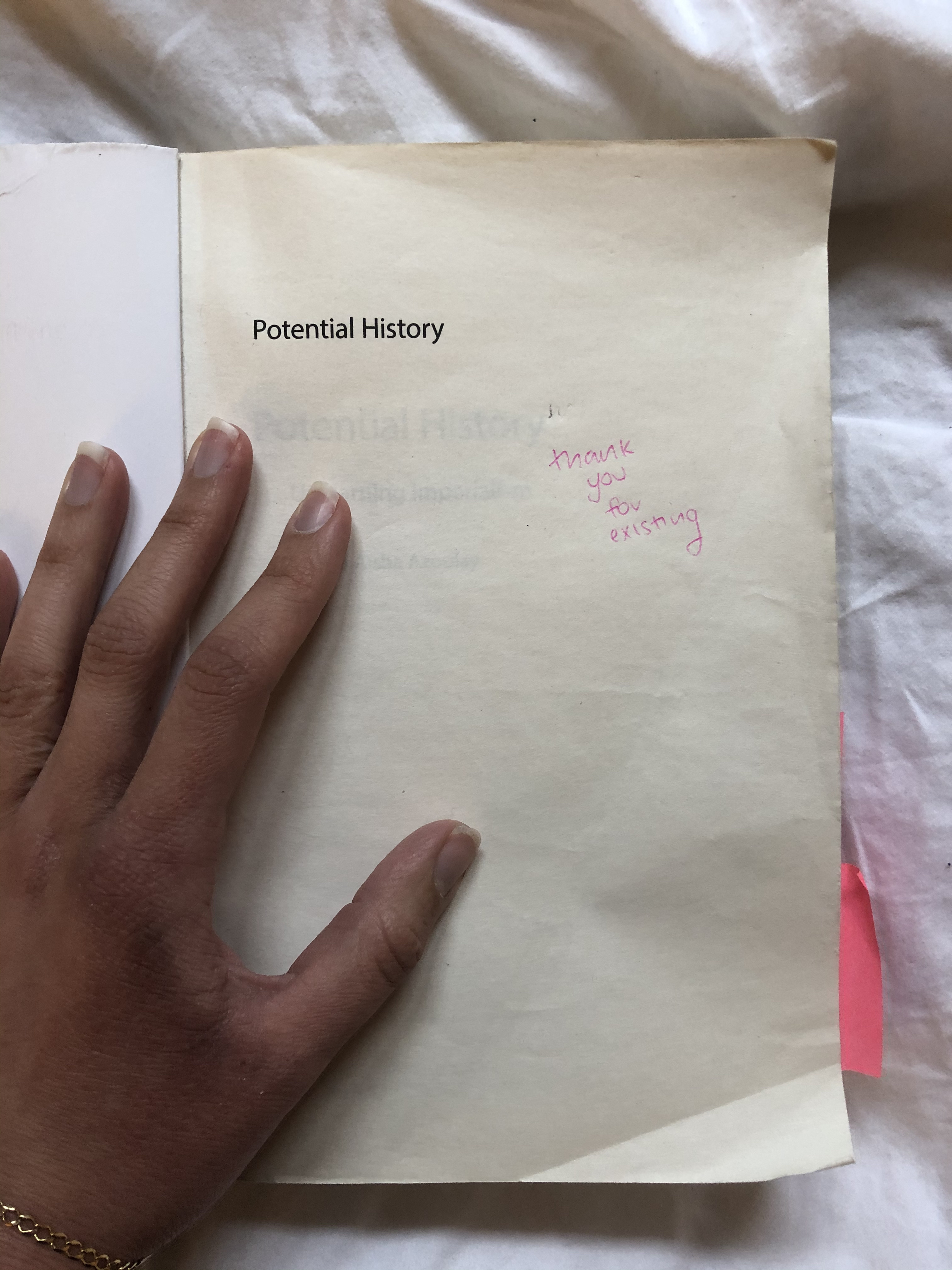Carry Commons, Reading Room
This page will become a reading room for sifting through SWANA photo histories. As we build, we offer words from scholar Ariella Aïsha Azoulay, for now:

Jaffa Road, between 1898 and 1914
“This lovely street, captured in a famous photo from the collection of the American Colony, was densely inhabited by numerous photographers’ studios…much of the history of early photographic activity in Palestine took place here [ on Jaffa Road ]: an open-ended urban space where many photographers had their studios; where photographed persons came by to have their photos taken or to buy those of others; and where occasional clients acted as spectators of photographs offered to their gaze and interacted with them according to different cultural, political, and economic protocols that they also helped to shape.”
︎ ︎ ︎
“Here on Jaffa Street, intentionally ruined, the invaluable fabric of one hundred years of photography in Palestine as a practice in which diverse photographers, photographed persons, and spectators participated was ruined. In its destruction we can also read the destruction of life before the imperial archival regime categorized “Arab” and “Jewish” as radically differentiated groups.”
︎ ︎ ︎
“ The ruination of the non-partitioned photographic field that was active in Palestine until 1948 is encoded, I argue, in any portion of light manipulated and processed by a camera in the Palestine-that-became-Israel. Old Jaffa Street still lives in every photograph of the region. The way that this light will be decoded and recoded can yield a different image depending on who can participate in the process of translating light to image and who can make its meaning.”—Ariella Aïsha Azoulay, “The Commons is Never Irremediably Lost: Jaffa St, Jerusalem,” in Potential History: Unlearning Imperialism (New York, NY: Verso, 2019), 276-280.
︎︎︎ back to Carry Commons

